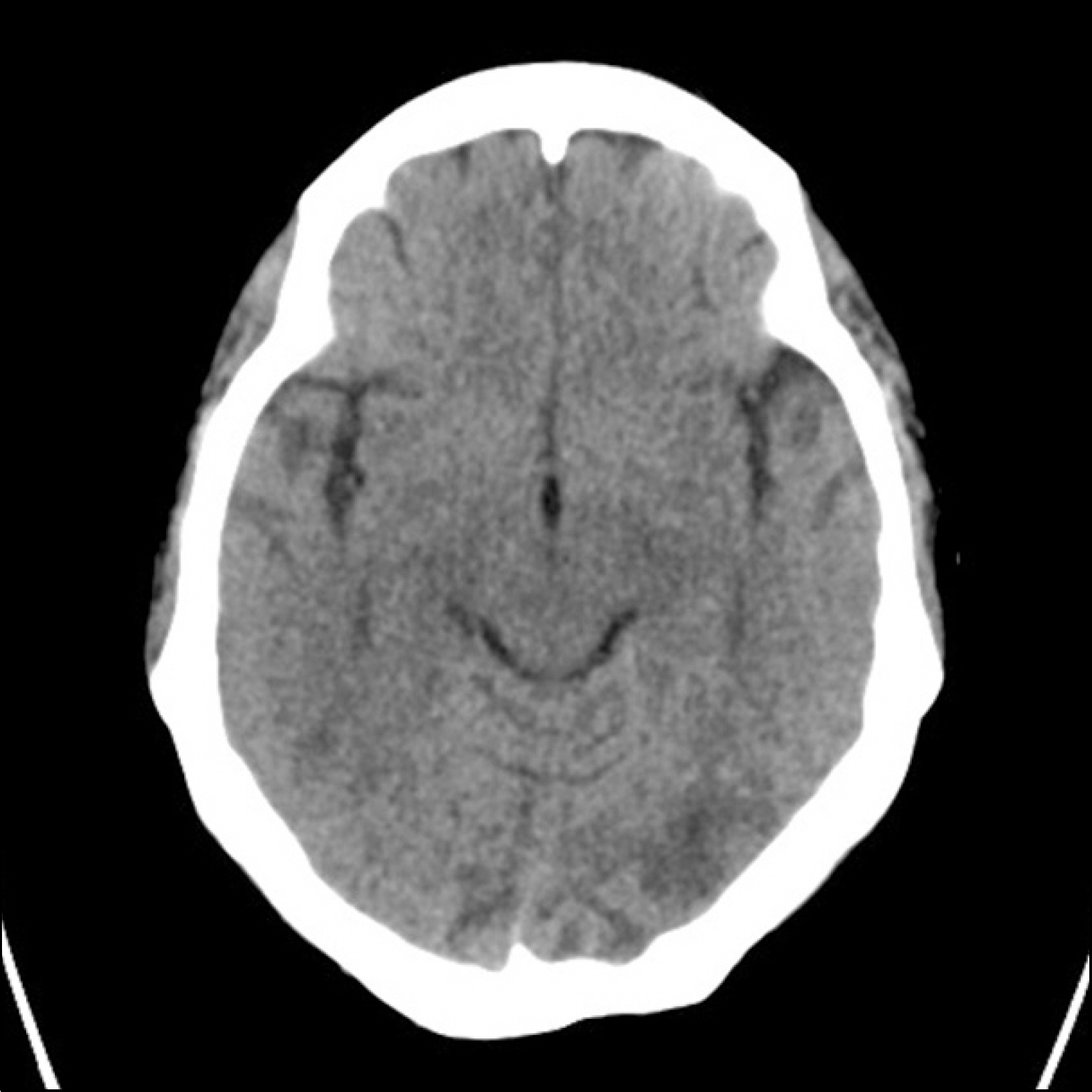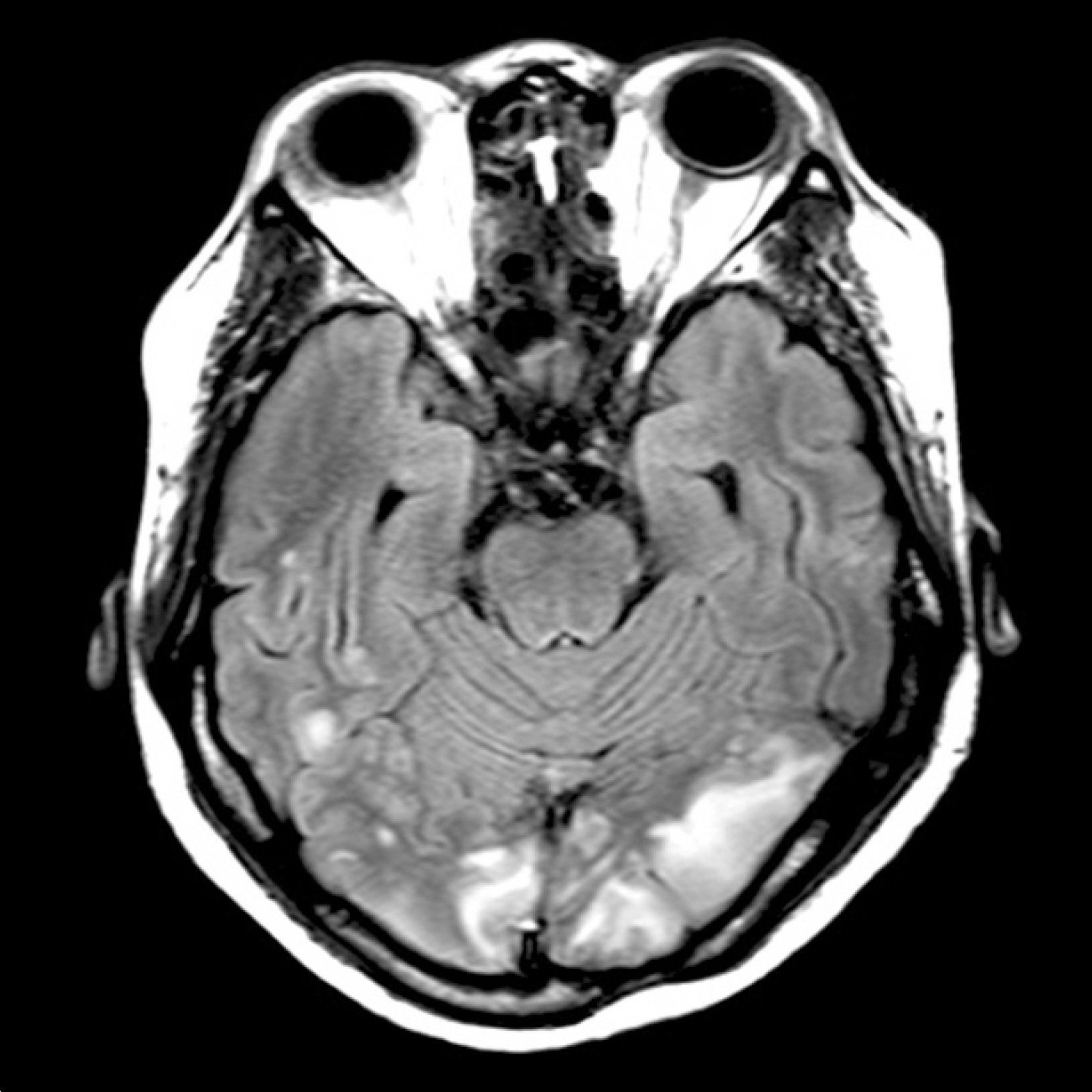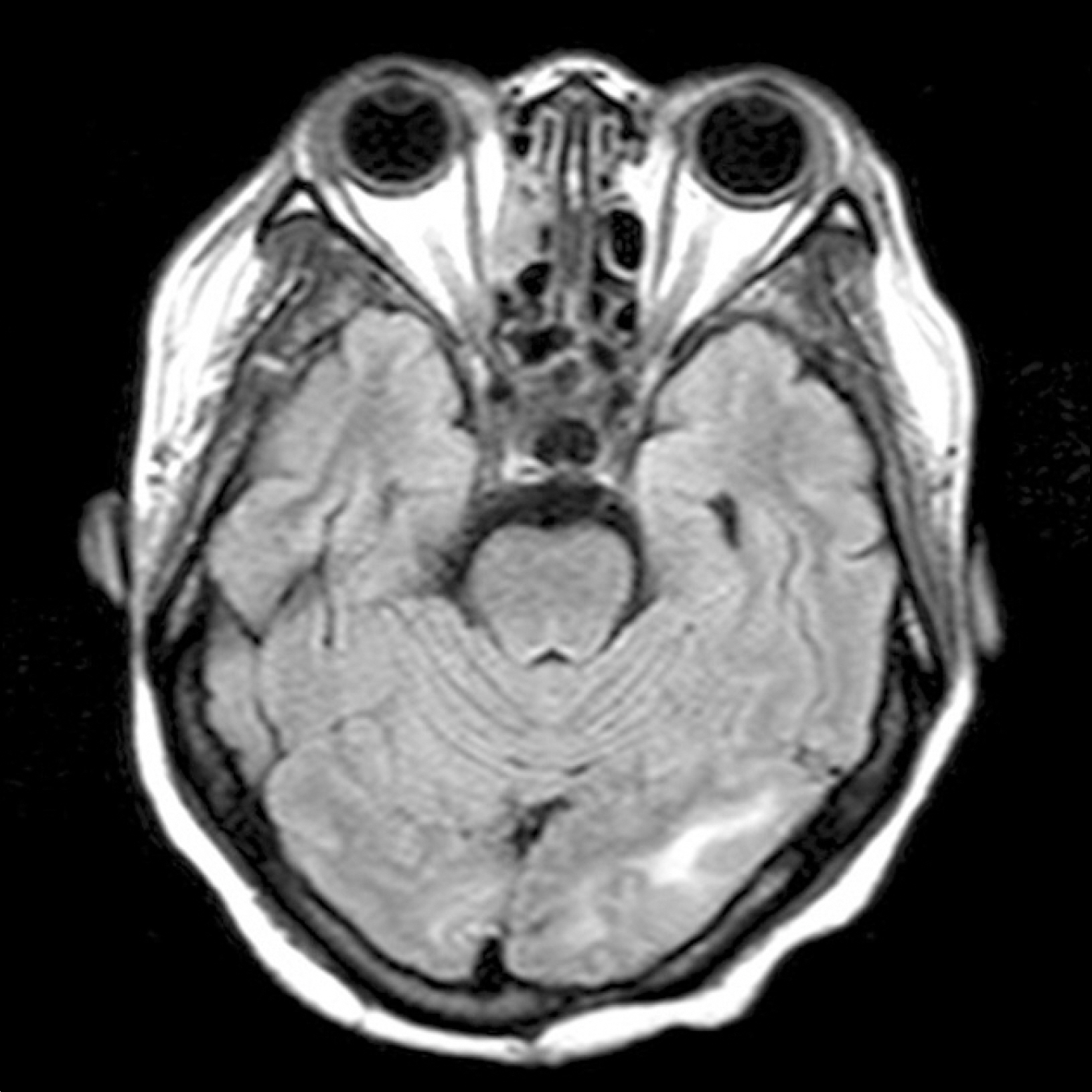J Rheum Dis.
2013 Apr;20(2):103-107. 10.4078/jrd.2013.20.2.103.
Cyclophosphamide-induced Posterior Reversible Encephalopathy Syndrome in a Patient with Lupus Nephritis
- Affiliations
-
- 1Department of Internal Medicine, Wonkwang University School of Medicine, Iksan, Korea. ckhlms@wku.ac.kr
- 2Department of Thoracic and Cardiovascular Surgery, Wonkwang University School of Medicine, Iksan, Korea.
- KMID: 2223034
- DOI: http://doi.org/10.4078/jrd.2013.20.2.103
Abstract
- Posterior reversible encephalopathy syndrome (PRES) is a neurologic condition characterized by vasogenic edema on neuroimaging and is associated with the setting of severe hypertension, eclampsia, autoimmune disease, malignancy, and immunosuppressive drugs. We report on a 42 year-old female systemic lupus erythematous patient who presented altered consciousness, seizure, and visual disturbance after cyclophosphamide pulse therapy. Magnetic resonance imaging (MRI) showed multi-focal high signal intensity lesions in the parieto-occipital cortex bilaterally and in the subcortical white matter. Her condition was improved and her MRI lesions were resolved after aggressive blood pressure control and high-dose steroid treatment. It is possibly the first reported case of PRES in a patient with lupus, treated with cyclophosphamide pulse therapy during a nephritis flare in Korea.
Keyword
MeSH Terms
Figure
Reference
-
References
1. Hinchey J, Chaves C, Appignani B, Breen J, Pao L, Wang A, et al. A reversible posterior leukoencephalopathy syndrome. N Engl J Med. 1996; 334:494–500.
Article2. Casey SO, Sampaio RC, Michel E, Truwit CL. Posterior reversible encephalopathy syndrome: utility of fluid-atte-nuated inversion recovery MR imaging in the detection of cortical and subcortical lesions. AJNR Am J Neuroradiol. 2000; 21:1199–206.3. Baizabal-Carvallo JF, Barragán-Campos HM, Padilla-Aranda HJ, Alonso-Juarez M, Estañol B, Cantú-Brito C, et al. Posterior reversible encephalopathy syndrome as a complication of acute lupus activity. Clin Neurol Neurosurg. 2009; 111:359–63.
Article4. Varaprasad IR, Agrawal S, Prabu VN, Rajasekhar L, Kanikannan MA, Narsimulu G. Posterior reversible encephalopathy syndrome in systemic lupus erythematosus. J Rheumatol. 2011; 38:1607–11.
Article5. Cuadrado MJ, Sanna G. Headache and systemic lupus erythematosus. Lupus. 2003; 12:943–6.
Article6. Leroux G, Sellam J, Costedoat-Chalumeau N, Le Thi Huong D, Combes A, Tieulié N, et al. Posterior reversible encephalopathy syndrome during systemic lupus erythematosus: four new cases and review of the literature. Lupus. 2008; 17:139–47.
Article7. Ay H, Buonanno FS, Schaefer PW, Le DA, Wang B, Gonzalez RG, et al. Posterior leukoencephalopathy without severe hypertension: utility of diffusion-weighted MRI. Neurology. 1998; 51:1369–76.
Article8. Bartynski WS. Posterior reversible encephalopathy syndrome, part 2: controversies surrounding pathophysiology of vasogenic edema. AJNR Am J Neuroradiol. 2008; 29:1043–9.
Article9. Magnano MD, Bush TM, Herrera I, Altman RD. Reversible posterior leukoencephalopathy in patients with systemic lupus erythematosus. Semin Arthritis Rheum. 2006; 35:396–402.
Article10. Johnson SR, Harvey PJ, Floras JS, Iwanochko M, Ibanez D, Gladman DD, et al. Impaired brachial artery endothe-lium dependent flow mediated dilation in systemic lupus erythematosus: preliminary observations. Lupus. 2004; 13:590–3.11. Leroux G, Sellam J, Costedoat-Chalumeau N, Le Thi Huong D, Combes A, Tieulié N, et al. Posterior reversible encephalopathy syndrome during systemic lupus erythematosus: four new cases and review of the literature. Lupus. 2008; 17:139–47.
Article12. Kou R, Greif D, Michel T. Dephosphorylation of endothelial nitric-oxide synthase by vascular endothelial growth factor. Implications for the vascular responses to cyclo-sporin A. J Biol Chem. 2006; 277:29669–73.13. Kurahashi H, Okumura A, Koide T, Ando Y, Hirata H, Magota M, et al. Posterior reversible encephalopathy syndrome in a child with bronchial asthma. Brain Dev. 2006; 28:544–6.
Article14. Bressler RB, Huston DP. Water intoxication following moderate-dose intravenous cyclophosphamide. Arch Intern Med. 1985; 145:548–9.
Article15. Abenza-Abildua MJ, Fuentes B, Diaz D, Royo A, Olea T, Aguilar-Amat MJ, et al. Cyclophosphamide-induced reversible posterior leukoencephalopathy syndrome. BMJ Case Rep. 2009; 2009.
Article
- Full Text Links
- Actions
-
Cited
- CITED
-
- Close
- Share
- Similar articles
-
- Posterior Reversible Encephalopathy Syndrome in a Patient with Lupus Nephritis
- Severe Hypogammaglobulinemia Associated with Active Lupus Nephritis Treatment Resulting in Cytomegalovirus Infection
- Posterior Reversible Encephalopathy Syndrome in a Patient with Systemic Lupus Erythematosus and Systemic Sclerosis Overlap Syndrome
- Successful treatment with rituximab in a patient with lupus cerebritis and posterior reversible encephalopathy syndrome: a case report
- Irreversible Hemorrhagic Complication of Recurrent Posterior Reversible Encephalopathy Syndrome in a Patient with Systemic Lupus Erythematosus




